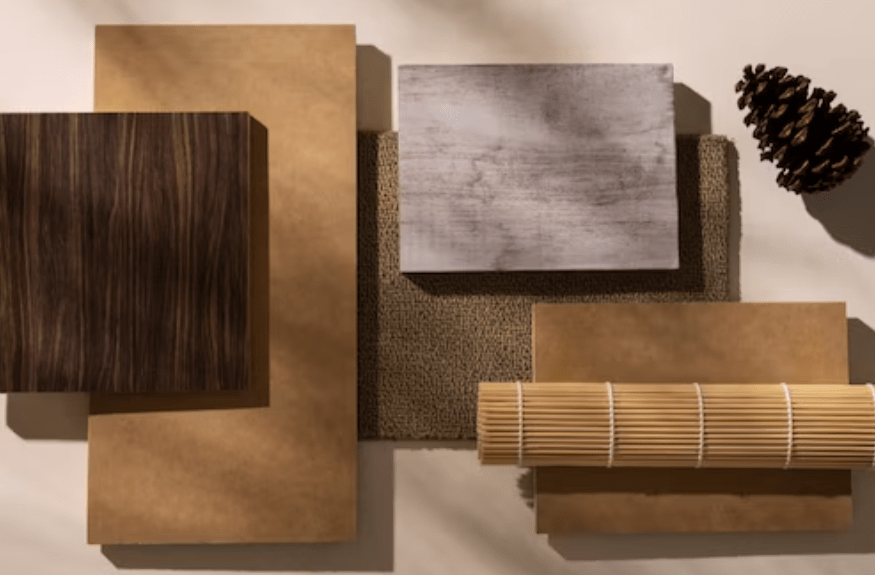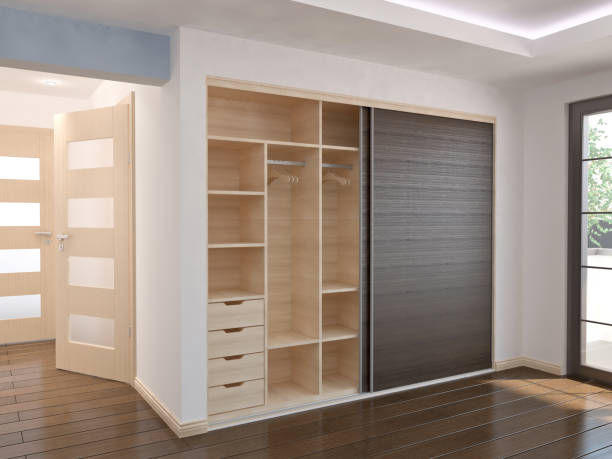Introduction: What is Wood-Plastic Composite
With the constant changes in our architecture, people and leaning more into aesthetic and eye-pleasing designs. Wood-plastic composite (WPC) is a modern material that combines the versatility of plastic with the natural aesthetics of wood. Unlike solid wood, WPCs exhibit greater resistance to moisture, insects, and decay. WPC is widely used in manufacturing decking, rails, fences, landscaping timbers, cladding and siding, park benches, and more.
The Production of Wood-Plastic Composite
Unique Blend of Materials
Wood-plastic composites are composed predominantly of wood fibers and thermoplastic materials. The quantities of each can differ, but typically, wood content is around 50-70%, and the plastic component makes up approximately 30-50% of the composite’s weight.
Manufacturing Process
The manufacturing process involves mixing ground wood particles and heated thermoplastic resin. The mixture is then molded or extruded into the desired shape. The end product is a material that combines the robustness of wood with the resilience of plastic.
The Rising Popularity of Wood-Plastic Composite
High Durability
The remarkable durability that Wood-Plastic Composites (WPC) boast is truly a game-changer in material science. One of the greatest advantages it offers over traditional wood is its strong resistance to rot and decay. These qualities primarily arise from the plastic component of the composite, shielding the material from the usual wear and tear wood succumbs to over time. In addition to withstanding decay, WPC is also immune to insect attacks. This aspect singularly stands to revolutionize sectors like building and construction, where termite damage is a relentless concern.
Furthermore, WPC’s ability to weather harsh environmental conditions without losing its structural integrity is a testament to its durability. Enduring intense sunlight, heavy rains, or freezing temperatures, WPC remains steadfast, showing minor to no damage. This endurance makes WPC particularly useful for outdoor applications, catering to infrastructures like decking, fencing, and railing that often bear the brute of the elements.
Low Maintenance
Aside from its high durability, WPC makes a compelling case with its low maintenance requirements. Traditional wood, despite its aesthetic appeal and structural integrity, requires substantial upkeep. It needs regular painting, staining, or sealing to maintain its appearance and prevent degradation. However, WPC sidesteps these demanding maintenance requirements, thanks to its synthetic component. The plastic in the composite ensures the material retains its look and functionality, despite environmental exposures.
The minimal maintenance factor of WPC not only saves time but also translates into significant financial savings over the product’s lifespan. Reduced costs on upkeep, repainting or repair work make WPC an attractive, cost-effective choice for both commercial and residential applications. It’s a classic case of a little more investment upfront securing benefits in the long run, cementing WPC’s place as an intelligent and efficient choice in the field of sustainable materials.
Potential of Wood-Plastic Composite in the Global Market
Consequently, WPC’s worth runs far deeper than mere physical attributes and can be considered as the pioneer for a sustainable society. Therefore, the combination of green ideology and practice has potential implications for diverse sectors, generating many jobs for people who are devoted to environmental protection.
Thus, it is no surprise that the global demand for WPC is anticipated to see significant growth. The rising consciousness of environmental issues and the need for sustainable solutions are forecasted to drive the expansion of the WPC market, making it an industry worth exploring.
Future Trends and Market Dynamics with Wood-Plastic Composite
Sustainability Matters
With the burgeoning demand for eco-friendly products, more and more WPC manufacturers are turning to recycled plastics and waste wood. They are contributing to the “circular economy,” reducing waste and conserving natural resources.
As for those interested in venturing into this growing and influential field, there are many opportunities. A solid foundation of material science, engineering, and hands-on experience with composite materials can provide the necessary skills to navigate this sector.
Technological Advancements
Emerging technologies are expected to enhance the properties of WPC, such as making it lighter or further improving its resistance to outdoor elements. Manufacturers are also focusing on implementing efficient production techniques to increase output while reducing energy consumption.
Beyond this, practical hands-on experience is an invaluable asset. Engaging with composite materials and gaining in-depth knowledge of the manufacturing processes will provide a practical edge. This hands-on experience, combined with robust technical knowledge, will prepare potential candidates to drive innovation—further advancing the WPC industry.
Preparing for a Career in Wood-Plastic Composite Industry
Specifically, those considering a career in the WPC industry would be well-placed to focus on refining and expanding their understanding of polymer processing and wood science. This sector uniquely combines these two inherently different elements to create a product that optimally utilizes the benefits of both. Being conversant in these aspects can provide a substantial advantage—allowing one to contribute actively to the continuous evolution of this field.
Conclusion
Wood-plastic composite is emerging as a revolutionary material that blends both natural (wood) and synthetic (plastic) qualities into an unprecedented concoction, radically redefining numerous sectors. It has become very popular as an eco-friendly, long-lasting, and low-maintenance substitute to timber that is used for the construction of decks, railing, fences and gardens. Recycled plastic and wood waste are likely to drive WPC’s future with a sustainability-centered focus on it. listade. Instruction: Convert the given sentence from AI written to human written Some technological advances are poised to revolutionize it to work better and still have high-quality goods.















